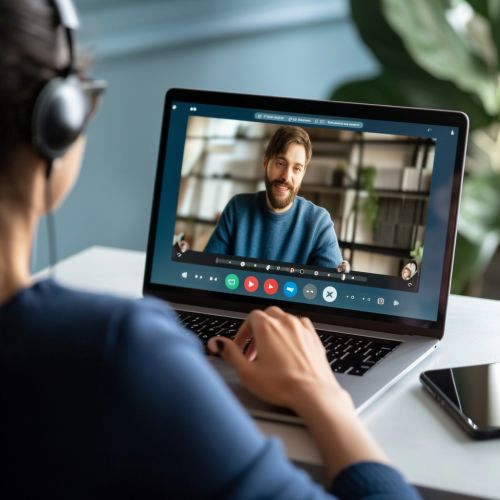Free Video Chat
Introduction
Free video chat is a method of communication that allows individuals to interact with each other in real time through video and audio transmission over the internet. This technology utilizes IP networks to transmit video and audio data from one user to another, enabling real-time communication regardless of geographical location.


History
The concept of video chat originated from the development of videoconferencing systems in the 1980s. These systems were primarily used by businesses for meetings and presentations, but the technology was expensive and complex, limiting its accessibility to the general public. With the advent of the internet and advancements in digital technology, video chat became more accessible and affordable, leading to its widespread use in various applications today.
Technology
Free video chat services operate using a combination of video, audio, and data transmission technologies. The video and audio data is captured through a user's webcam and microphone, then encoded into a digital format using various codecs. This data is then transmitted over the internet using IP networks, where it is received and decoded by the recipient's device, allowing for real-time communication.
Applications
Free video chat has a wide range of applications, from personal communication to business meetings, education, healthcare, and more. In the realm of personal communication, it allows individuals to connect with friends and family members across long distances, fostering a sense of connection and intimacy. In the business world, it enables remote meetings and collaborations, reducing travel costs and increasing efficiency. In education, it facilitates online learning and virtual classrooms, providing access to education for students in remote areas. In healthcare, it allows for telemedicine, enabling patients to consult with healthcare professionals remotely.
Advantages and Disadvantages
Free video chat offers several advantages, including cost-effectiveness, convenience, and the ability to communicate face-to-face regardless of geographical location. However, it also has its disadvantages, such as potential privacy and security issues, the need for a stable internet connection, and the potential for miscommunication due to lack of non-verbal cues.
Future Trends
The future of free video chat is likely to be shaped by advancements in technology and changes in societal needs. Potential trends include the integration of video chat with other forms of communication, the development of more sophisticated video and audio codecs, improvements in security and privacy measures, and the incorporation of virtual reality and augmented reality technologies.
